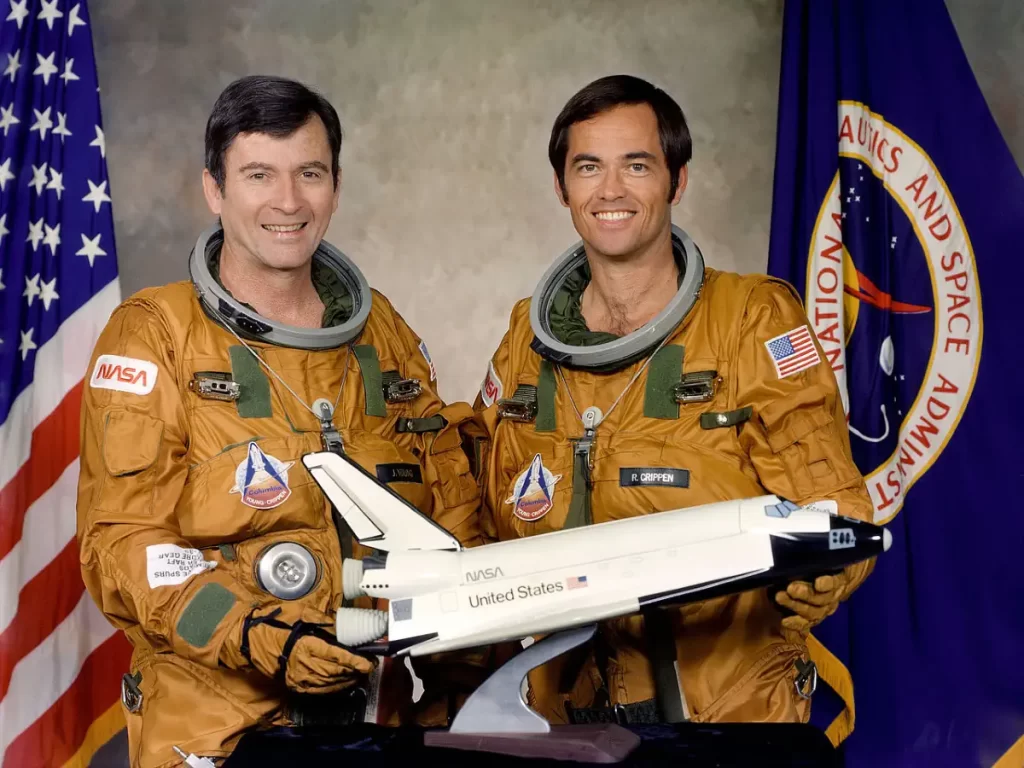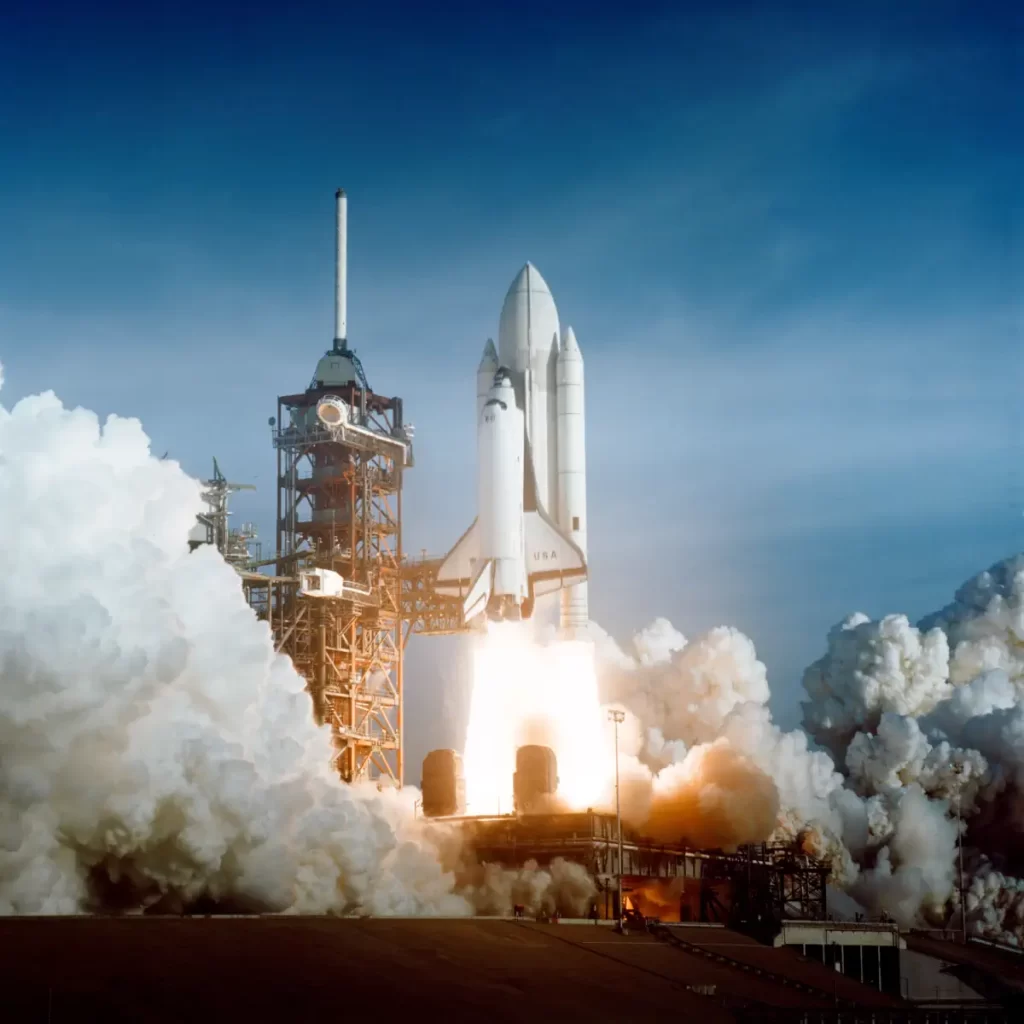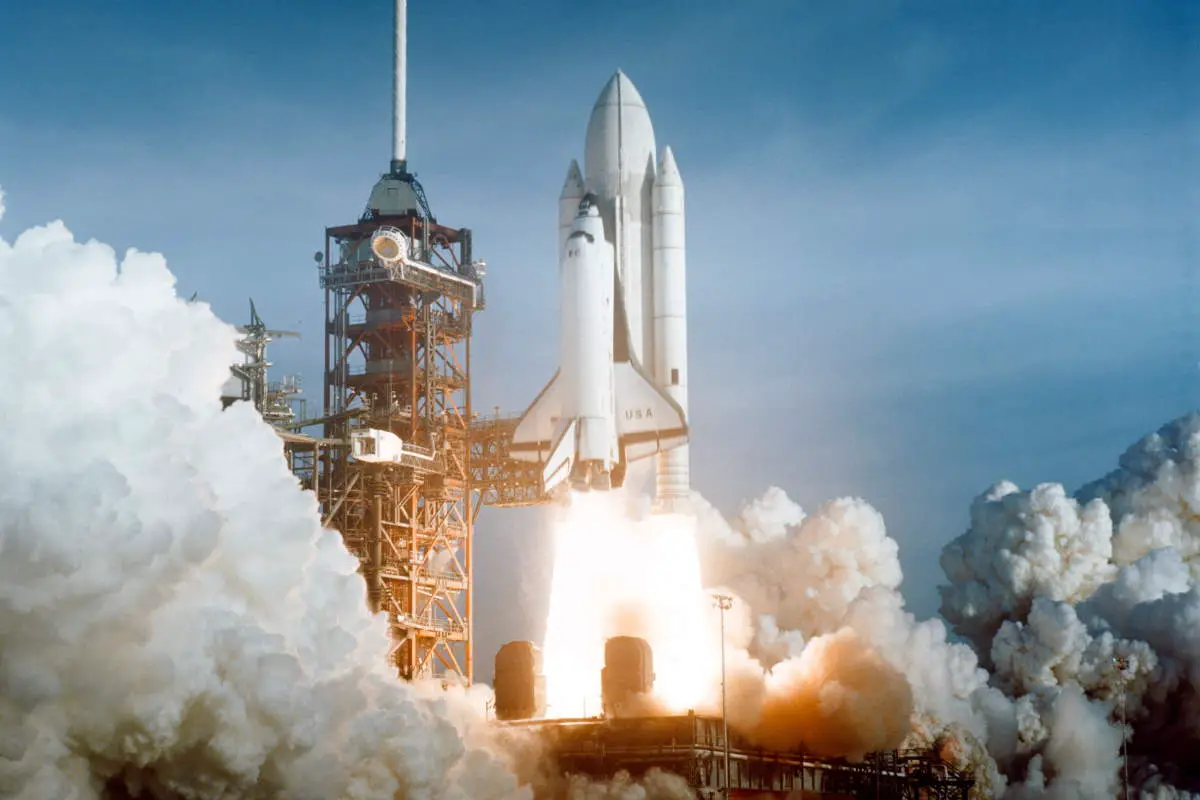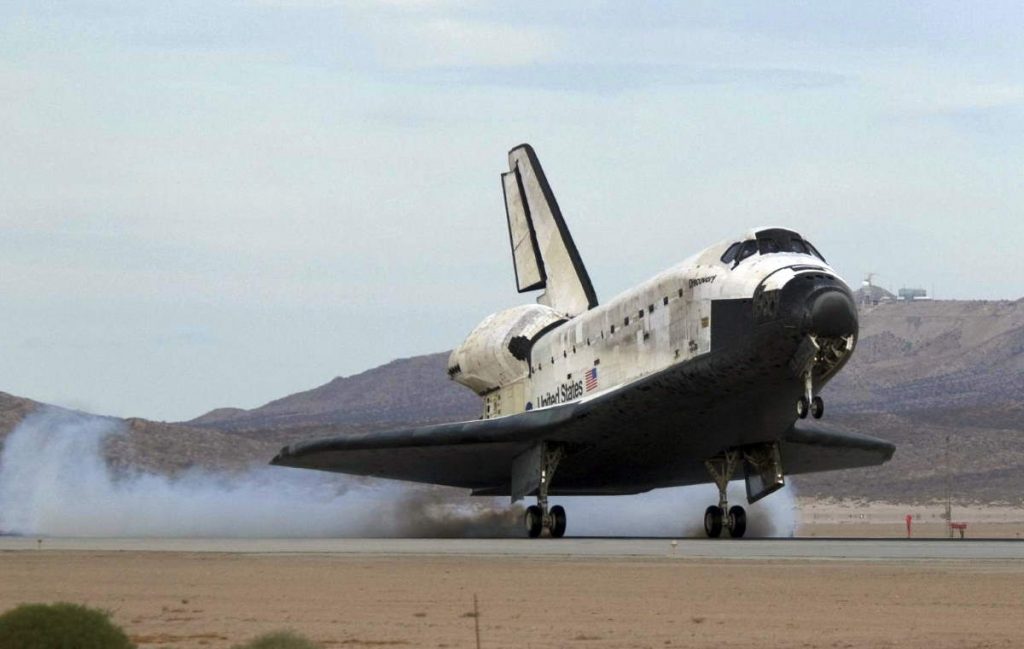On April 12, 1981, NASA launched the first Space Shuttle mission, STS-1 (Space Transportation System-1), into space. The first reusable orbiter, Space Shuttle Columbia orbited Earth 37 times on its maiden voyage and returned on April 14, 1981, 54.5 hours later its launch.
Today’s (April 12) story of what happened this day in Science, Technology, Astronomy, and Space Exploration history.
Video: First Space Shuttle Launch: STS-1 (1981), Columbia
On April 12, 1981, NASA’s Space Shuttle Columbia, attached to an external tank and twin solid rocket boosters, lifted off on the first shuttle mission, STS-1, at 7 a.m. Eastern, from Launch Complex 39A at Kennedy Space Center in Florida.
The orbiter carried a crew of two: mission commander John W. Young (September 24, 1930 – January 5, 2018) and pilot Robert L. Crippen (born September 11, 1937).
The launch occurred on the 20th anniversary of the first human spaceflight, Vostok 1, performed by Yuri Gagarin for the USSR.
STS-1 was Young’s fifth spaceflight. His previous missions included Gemini 3 and 10, and Apollo 10 and 16. Young walked on the Moon during Apollo 16. It was the first spaceflight of Crippen. Later, he traveled into space three times, as the Commander of STS-7 in June 1983, STS-41-C in April 1984, and STS-41-G in October 1984.
The first space shuttle mission, STS-1 was a pure test mission to prove the shuttle system would work. The astronauts’ job was to launch, get to orbit, check out all the systems on the spacecraft, and bring it in safely for a landing.
On April 23, 1981, John Young and Robert Crippen, the crew of Columbia’s maiden flight, told of their experience at a 75-minute Johnson Space Center press conference carried on closed-circuit television to NASA headquarters and other centers.
They said that the orbiter was an incomparable flying machine, surprisingly easy to control and that the mission was “what NASA calls nominal, although I think you’re going to have to call it phenomenal,” Young reported.
Neither crewman expressed concern over the loss of tiles from the aft end of the vehicle, detected shortly after launch.
Young said that he was impressed by the fact that the metal under the tiles did not heat up during reentry as much as expected: he said “a lot” of the thermal tiles on the topside could probably be eliminated in future missions, lowering spacecraft weight and increasing the limit on payload weight, now set at 65,000 pounds (29,483 kg).
Young said that he went immediately upon landing to look at the underside of the orbiter, which had encountered the most heat. “People had been telling us it was impossible that some of these tiles wouldn’t fall off. Well, none of them fell off, and those tiles went through some of the roughest ascent and reentry you can imagine.”
“Nothing failed. Statistically, I didn’t think that was possible,” Crippen added. “We’ve been working 3 years to learn how to handle catastrophes, and all we did the whole time was sit back and enjoy it.”
[Unfortunately, on February 1, 2003, when the Space Shuttle Columbia disintegrated upon re-entry into Earth’s atmosphere. A piece of foam insulation broke off from the shuttle’s external tank during launch and struck the left wing, damaging its thermal protection system tiles. This damage allowed hot atmospheric gases to penetrate and destroy the internal wing structure, leading to the spacecraft’s disintegration.]
The cruise was not perfect, the astronauts agreed: the craft was cold to the point of discomfort some of the time, and the toilet shut down near the end of the flight. The crew kept getting tangled in communication lines, and Columbia “landed long” instead of at its prescribed touchdown spot.
Young said the chill could be avoided by putting interior temperature sensors nearer to the crew than to heat-emitting electronic gear. Cordless microphones would solve the problem of tangled cords, and engineers were already working on the toilet program.

Young said that he had landed Columbia farther down the 7-mile long runway than he was asked in order to test the Shuttle’s wings and tail for lift; he said that the lift he got at landing was “remarkable.”
“We hardly used our brakes. I tell you that was quite a performance, taking 99 tons out of orbit and getting it back down all in one piece.”
A reporter asked Crippen if his pulse rate of 130 at liftoff, compared to Young’s 90, meant that he was more excited. “You bet I was excited,” he replied. “What you don’t understand is: I was excited too,” Young added. “I just can’t make it go any faster.” (Young was seven years older than Crippen, so his pulse rate was slower. The age difference does not explain the difference between heart rates, though. Young was most probably being humble here.)
“It was probably one of the most exciting things in my life,” Crippen says.
Crippen recalls: “We didn’t carry any satellites or things of that nature. We carried a lot of special recording equipment. Our job, basically, was just to make sure that the vehicle would do what we wanted it to do. And it lived up to all of our objectives.”
Space Shuttle Columbia

Columbia was the first space shuttle to be manufactured and flown into space. It was named after the first American ship to circumnavigate the upper North American Pacific coast and the female personification of the United States.
During its 22 years of operation, Space Shuttle Columbia:
- flown on 28 missions in the Space Shuttle program
- spent over 300 days in space
- completed over 4,000 orbits around Earth
Unfortunately, on February 1, 2003, Columbia was destroyed during re-entry and all seven astronauts on board were killed.
The Space Shuttle program finished with its last mission, STS-135 flown by Atlantis, in July 2011, retiring the final Space Shuttle in the fleet. Upon retiring, the space shuttle’s 135 missions flew 355 astronauts from the U.S. and 60 different countries into space.
April 12 in Science, Technology, Astronomy, and Space Exploration history
- 1981: The First Space Shuttle launched
- 1961: Yuri Gagarin became the first human to fly into space
Sources
- STS-1, First Shuttle Mission/Shuttle Systems Test Flight on the NASA website
- STS-1, the first orbital spaceflight of NASA’s Space Shuttle program on Wikipedia
- Space Shuttle Columbia on Wikipedia
- STS-1: Astronaut Bob Crippen Remembers the Ride of His Life. April 12, 2021, NASA.
- Moon Landings: All-Time List [1966-2025] - February 2, 2025
- What Is Max-Q and Why Is It Important During Rocket Launches? - January 16, 2025
- Top 10 Tallest Rockets Ever Launched [2025 Update] - January 16, 2025

